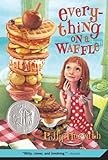This article, from Susan K. Perry, PhD, originally appeared on the Psychology Today site on 5/7/09.
Create real memories, says sci-fi author Samuel R. Delany.
Flashbacks threaded into a novel are handy devices for dealing with past events. But many writers misuse flashbacks, writes science fiction author Samuel R. Delany in About Writing: 7 essays, 4 letters, & 5 interviews.
Delany, winner of both Hugo and Nebula awards, has written dozens of books, including science fiction novels, short stories, and nonfiction. That experience, as well as his 35 years as a creative writing instructor and critic, have convinced him that flashbacks are often constructed lazily and clumsily.
Here’s Delany on memory and fiction:
However much, as readers, we lose ourselves in a novel or story, fiction itself is an experience on the order of memory-not on the order of actual occurrence. It looks like the writer is telling you a story. What the writer is actually doing, however, is using words to evoke a series of micromemories from your own experience that inmix, join, and connect in your mind in an order the writer controls, so that, in effect, you have a sustained memory of something that never happened to you. That false memory is what a story is.
As if to corroborate Delany, an article by Gary Marcus appeared recently about a woman who seems to have perfect autobiographical recall. That’s apparently a genuine oddity. Writes Marcus:
Ordinary human memory is a mess. Most of us can recall the major events in our lives, but the memory of Homo sapiens pales when compared with your average laptop. … it’s easy for us to forget things we’ve learned; and it’s sometimes hard to dislodge outdated information. Worse, our memories are vulnerable to contamination and distortion…. The fundamental problem is the seemingly haphazard fashion in which our memories are organized…. Human recall is hit or miss. Neuroscientific research tells us that our brains don’t use a fixed-address system, and memories tend to overlap, combine, and disappear for reasons no one yet understands.
Now back to Delany. It’s the fiction writer’s task, he says, "to make that unreal memory as clear and vivid as possible," which depends on the order of the words the writer selects. Delany, in fact, lauds the use of realistic flashbacks, the true-to-life flashes that last from half a second to 10 seconds at the most. "Thus, in texts," he writes, "they are covered in a phrase or two, a sentence, three sentences, or five sentences at most."
In my own novel-in-progress, I use a lot of momentary flashbacks, sometimes as a way of metaphor-making. Here are two examples:
1. He could smell his own skin, the prickles under his arms, in his groin. A fear scent etched in memory from the first week he’d had his driver’s license and his car had skidded sideways on the freeway.
2. My husband dipped his hands again and again into a bowl of curly orange-colored snacks, until his palms and fingers took on a putrid glow. His wedding ring was incongruous on those oversized little boy orange hands. The setting sun glinted off one of the ring’s small diamonds. A sudden image popped up of a glittery Cracker Jacks ring from when I was six, and me, in my bedroom, staring into the ring’s central bit of multi-faceted glass. A microcosm lay within: a sunny country setting, large leafy tree to the left with a person sitting under it, a meadow, a stream. A sense of this being a place you could walk into. I shrieked for my mother, but try as she would, she wasn’t able to catch a glimpse of it. Nor could I, ever again.
Realistically, explains Delany, when you try to concentrate on a past event longer than a very few seconds, the present always intrudes. So he refutes the logic of having a character walk down the street and run over the previous three months, say, in a relationship. Those stories simply start in the wrong place, he insists.
Read the rest of the post on the Psychology Today site.

 Take, for example, Audrey Niffenegger’s novel The Time Traveler’s Wife. In it, the plot (the ball on which you must keep your eye) is “time-traveling man falls in love and wants to stay put in the present with his woman.”
Take, for example, Audrey Niffenegger’s novel The Time Traveler’s Wife. In it, the plot (the ball on which you must keep your eye) is “time-traveling man falls in love and wants to stay put in the present with his woman.”

